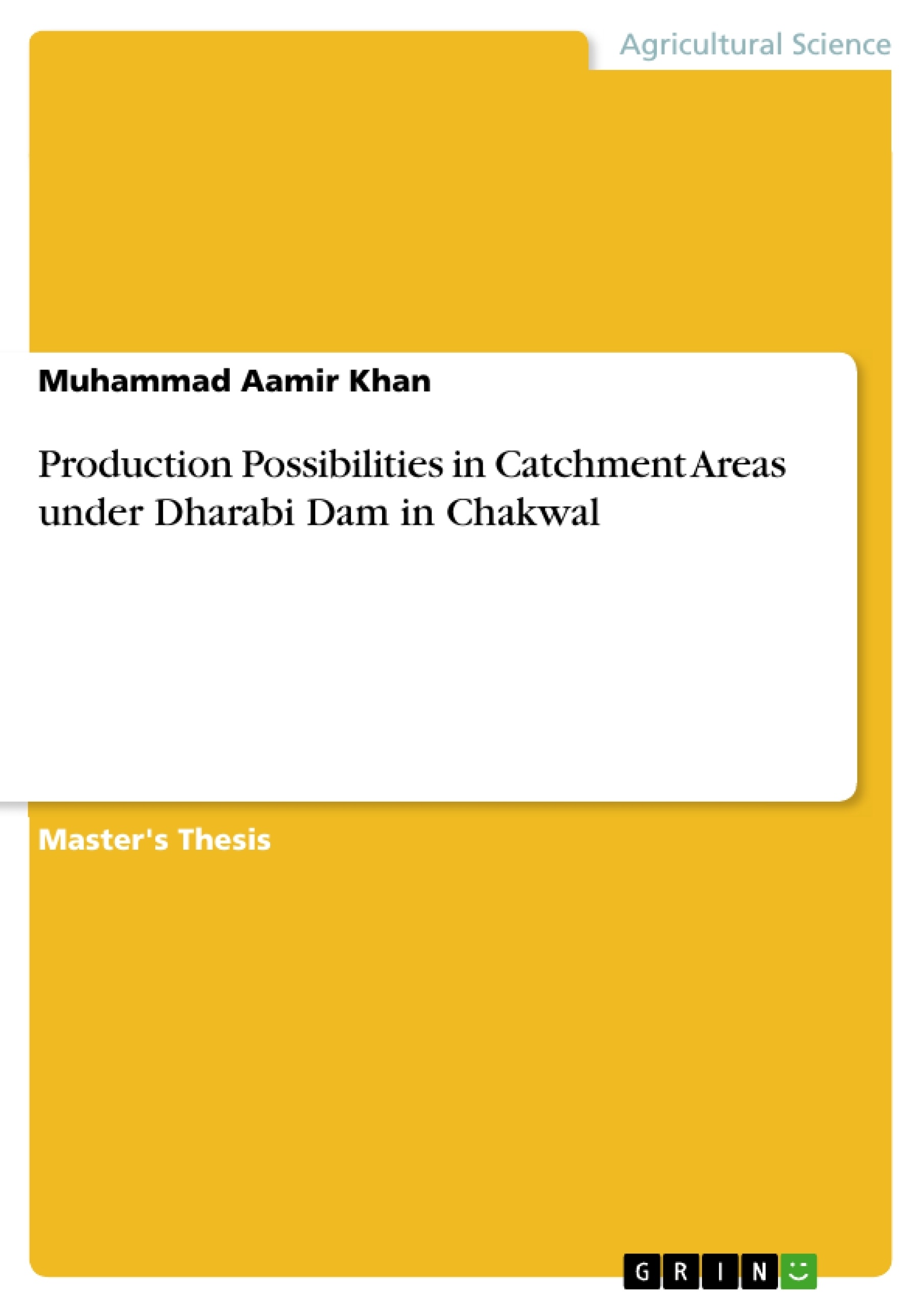Water is a limiting factor for sustainable agriculture in Barani (Arid). However, rainfall is the only source of water the spatial and temporal variation of which is very high. Therefore conservation and management of this source is vital for agriculture development and socio-economic uplift of the area. This study was, mainly, devised to address land distribution problems and consequent farm productivity in the study area. Furthermore, level of land distribution disparities was focused on to observe its relationship with different on-farm and socio-economic indicators including gross margins, cropping intensity crop diversity, income distribution disparities and institutional credit availability etc. All of the aforesaid indicators were also assessed for small, medium and large farm size categories. The farmers were divided into two main categories irrigated and rainfed farmers. Land was observed evenly distributed in irrigated area while land distribution was found most skewed in rainfed area. The performance of most of the indicators i.e. yield, gross margins, farm income, labour productivity, income distribution, cropping intensity and crop diversity was found better in irrigated as compared to rainfed. While marginal factor productivity, irrigation productivity and rate of institutional credit availability was higher in irrigated area. However, rainfed area was always least efficient with respect to all of the quantified indicators. The findings of the research are helpful for the farmers of the study area in decision making among different farm enterprises. Hence it can alleviate poverty and help to bring food security in the deprived regions.
Inhaltsverzeichnis (Table of Contents)
- INTRODUCTION
- REVIEW OF LITERATURE
- MATERIALS AND METHODS
- 3.1 SURVEY SCHEDULE
- 3.2 CALCULATION OF GROSS MARGINS
- RESULTS AND DISCUSION
- 4.1 FARM HOUSEHOLD CHARACTERISTICS
- 4.2 FARM HOUSEHOLD ASSETS
- 4.3 OTHER ASPECTS OF DAM CONSTRUCTION
- 4.4 FARM CHARACTRISTICS
- 4.5 FARM INPUTS USE
- 4.6 FARM OUTPUT
- 4.7 FARM AND HOUSEHOLD INCOME
- SUMMARY
Zielsetzung und Themenschwerpunkte (Objectives and Key Themes)
This thesis aims to explore the production possibilities within the catchment areas of Dharabi Dam in Chakwal, Pakistan. The study focuses on analyzing the impact of the dam on agricultural production and the socioeconomic conditions of the local farming households.
- The influence of Dharabi Dam on agricultural production and land use patterns.
- The impact of the dam on the livelihoods and income of farm households in the catchment area.
- An assessment of the economic benefits and challenges associated with dam construction.
- An analysis of farm inputs and outputs, including crop yields, livestock production, and irrigation practices.
- The identification of opportunities and potential strategies for optimizing agricultural production within the dam's catchment area.
Zusammenfassung der Kapitel (Chapter Summaries)
The thesis begins with an introduction that outlines the context and rationale for the study. It then presents a comprehensive review of existing literature on the economic and social impacts of dam construction, particularly in arid and semi-arid regions. The methodology chapter details the survey techniques employed, including the development of a survey schedule and the calculation of gross margins for different agricultural activities. The results and discussion section delves into the characteristics of farm households in the catchment area, analyzing their assets, income sources, and agricultural practices. The chapter also explores the various aspects of dam construction, including its influence on land use, irrigation facilities, and the adoption of new agricultural technologies. Finally, the thesis concludes with a summary of the key findings and recommendations for future research and policy interventions.
Schlüsselwörter (Keywords)
The thesis focuses on the economic and social implications of dam construction in arid regions. Key themes include agricultural production, farm household income, irrigation, land use, socioeconomic impacts, and the benefits and challenges of dam projects.
- Quote paper
- Muhammad Aamir Khan (Author), 2008, Production Possibilities in Catchment Areas under Dharabi Dam in Chakwal, Munich, GRIN Verlag, https://www.grin.com/document/175684




